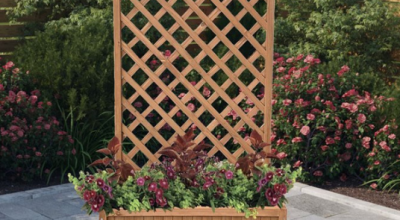Jump to:
Hanging a garden hammock is straightforward as long as you know how to tie a knot. But here’s the thing: some knots are more suited to the task than others. In this guide, we’ll list a few basic techniques, as well as steps to connect them to your hammock. Ready?
Basic Knots
Basic knots are beginner-friendly, so even kids on a camping trip can do them. They come in handy for various uses, like tying up a hammock to a tree, on a patio, or anywhere there are posts for attachment.
These knots act as a stopper to prevent the rope from slipping through a bolt eye or similar structure. Examples of basic knots include:
Bowline knot

(Image Credit: Wikimedia Commons)
A bowline knot creates a fixed loop at the end of a rope. It holds up best if constant pressure pulls against it, such as when someone sits in a hammock, and the weight creates force.
To tie a hammock using this technique, make a small loop in the rope. Pass the end of the rope through the loop from underneath. Bring it around the rope’s standing part and back through the loop. Pull it tight to lock the knot in place.
Square knot

A square knot consists of two half-knots tied in opposite directions, one on top of the other. It joins two ends of a rope and works best when the ropes are of the same diameter and under tension.
Attach one end of the rope to the hammock’s attachment point. Cross the rope ends at the attachment point to make the first half-knot. Cross the rope ends in the opposite direction to complete the square knot for the other end. Pull the rope tight, and the hammock is fastened and ready for use!
Fisherman’s knot

(Image Credit: Wikimedia Commons)
A fisherman’s knot is a strong knot used to join two ropes or lines. It doesn’t jam or slip under strain and can be untied easily, so it’s common in fishing and is suitable for hammocks.
To use this method for a hammocking tying knot, secure one end of the rope to the loop or ring. Attach the other end of the rope to a tree, then join the ends of the ropes you need to connect them. Tie them with overhand knots, and you’re done!
Surgeon’s knot

(Image Credit: Wikimedia Commons)
A surgeon’s knot is similar to the square knot but with an extra twist when tying the first throw. It’s used to join two ropes or lines together, making it more secure and reliable for heavy loads or different rope diameters.
In the context of how to hang a hammock using this knot, you need to tie two ends of the rope together with an overhand knot. Add one more turn with each end of the rope, and then pull the knot tight and fix it wherever you wish to hang it. For instance, tie one side of the hammock to a tree and the other side to the post on the extended deck of a nearby log cabin.
Round-up
These basic knot methods can help you set up your hammock quickly, and before you know it, it’ll be your go-to spot for relaxing. The type of knot you use depends on how you want your setup, but overall, they’re effective!
But did you know you can avoid the tying hassle by investing in a hammock with a frame, like this double hammock with folding stand? It comes with its own stand, so you don’t need to find trees or posts. It’s easy to set up anywhere in your yard or patio without the need for knots or extra tools.
If you’re looking for other ways to set up your hammock in your outdoor space, check out these patio ideas for small gardens!













What do you think ?